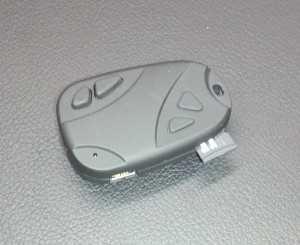Security firm G4S began confiscating smart phones from share holders and journalists at it’s 2015 AGM (Annual General Meeting) in London after activists used them to record their protests and removal by security staff at last year’s event. Such events can not only be disruptive to the meeting but also damaging to shareholder relations.
A spokesman for G4S told the Guardian newspaper: “Last year we had a large number of protesters who were effectively staging demonstrations in the meeting and they were filming it. The intention is not to suppress the legitimate free speech of people but it is just simply to maintain some degree of security for our people in the meeting.” Along with sweeping meeting rooms prior to important conferences, we often recommend restricting cell phones from any sensitive meetings, especially where the public may be permitted. It is not always easy to do and requires extra security measures. In years past, prior to the abundance of digital smart phones, it was a fairly easy matter to secure a meeting room, we could set up radio monitoring equipment with directional antennas, and could tell if any bugs or transmitter signals were appearing in the target area. Now, though, it is not as simple. Cellular technology is everywhere, on every person, and while we have techniques to help track down the source of a cellular signal, if the attendees are not restricted, then there would be too many cellular signals present and no way to know if a device was being used for eavesdropping or unauthorized surveillance. If a phone is on, even though it may not be in use, it would still send out transmissions trying to maintain connection to the nearest tower. Even if a phone was put in to “airplane mode” where the radio circuits are turned off, it could still be used for recording both audio and video. Securing a room today requires extensive measures. Physical security measures would include deploying X-ray machines and magnetometers (metal detectors). Recent devices on the market include walk-through “cell phone detectors”. A unit such as the “Sentry Hound” by Berkeley Varitronics of New Jersey is a walk through device tuned to detect cellular circuitry. It does not react to metal or keys but lights up to indicate the presence of a cell phone. This could be a bit less expensive than metal detectors and X-ray machines, and perhaps a bit less intimidating. At more secure meetings you may already be screening participants for weapons, so the personnel manning the screening stations should know the policies for cellular and recording devices as well. Other steps include: SentryHound walk-through cell phone detection portal by Berkeley Varitronics. Another example of disruption comes from the Supreme Court, posted on YouTube in February of 2014 which we reported on here. Recording devices may take on many other forms that are harder to detect than cell phones. Key fobs, pens, and USB thumb drives are common devices available from many online sources. USB Recording Device Pen covert video/audio recorder Many companies already have such restrictions in place for their shareholder meetings as well as other sensitive meetings and conferences. G4S is now following their example. If you need help securing your meetings from eavesdropping or recording devices, don’t hesitate to give us a call. Jun 5, 2014- Not much in terms of video footage due to covert nature of the recording, but a lot of very audible disruption as the G4S AGM was interrupted repeatedly by protestors. This was just one of about 8 interruptions during CEO Ashley Almanza’s speech.




